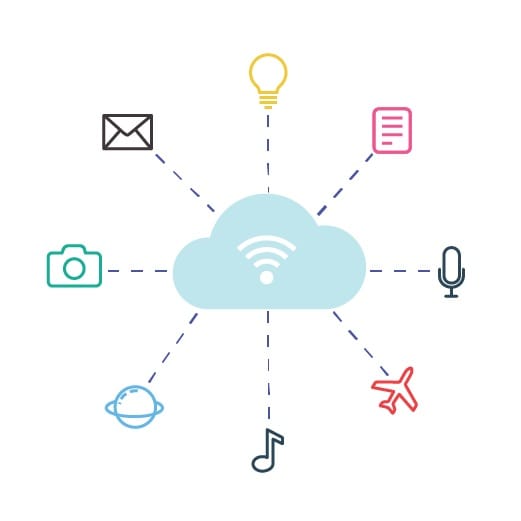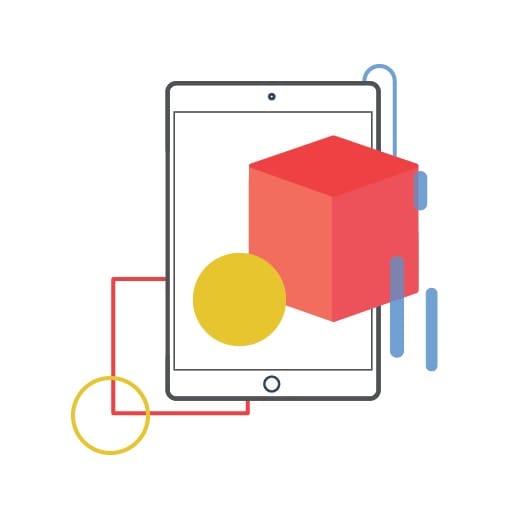5 Trends Continuing to Shape Collaboration in the Workplace

Collaboration in the workplace has always been an important function. When your team is working with diverse skills and knowledge, a more robust approach to problem-solving is enabled and sparks innovation and creativity. Collaborating with people who bring different perspectives and experiences to the table produces more meaningful outcomes.
Collaboration is especially more important now as businesses see not only their workforces becoming more mobile and dispersed, but also their customers and key stakeholders. Having a more global eco-system and virtual workspace is increasing the need to adopt collaborative solutions to help teams stay connected, share ideas, and be productive. Innovative solutions that enable seamless collaboration are vital to allowing your teams to work together efficiently to reach your business goals and ultimately your customers.
Let’s take a look at a few trends that are continuing to help business people collaborate.
Gamification
 Gamification is the practice of using game-like applications in non-game contexts. Effective gamified business environments can make mundane tasks more enjoyable while enhancing productivity and engagement. Awarding employees through gamification creates a sense of accomplishment and motivates behavior. And the end benefit for the players does not come in just physical reward such as money, but also from an internal reward of mastery, meaning, and belonging. So incorporating gamification into a firm’s collaboration efforts seems like a logical step. Teams can work together to promote learning, problem-solve, and complete tasks. The team then benefits from collectively sharing in meaningful accomplishments, recognition, and awards. With a sense of joint achievement created, working relationships can improve and business goals can magnify. And awards can be granted not only for working on tasks together, but also by simply exemplifying a collaborative spirit. As an example, employees can earn points for sharing their colleagues’ content pieces on their personal social media accounts to increase exposure.
Gamification is the practice of using game-like applications in non-game contexts. Effective gamified business environments can make mundane tasks more enjoyable while enhancing productivity and engagement. Awarding employees through gamification creates a sense of accomplishment and motivates behavior. And the end benefit for the players does not come in just physical reward such as money, but also from an internal reward of mastery, meaning, and belonging. So incorporating gamification into a firm’s collaboration efforts seems like a logical step. Teams can work together to promote learning, problem-solve, and complete tasks. The team then benefits from collectively sharing in meaningful accomplishments, recognition, and awards. With a sense of joint achievement created, working relationships can improve and business goals can magnify. And awards can be granted not only for working on tasks together, but also by simply exemplifying a collaborative spirit. As an example, employees can earn points for sharing their colleagues’ content pieces on their personal social media accounts to increase exposure.
Internet of Things (IoT)
 The Internet of Things (IoT) is not a new trend, but one that is still viable in trending collaboration solutions. IoT connects devices to each other and to a network in order to collect and exchange data. Practically any physical object can be embedded with the necessary sensors and software to be part of the IoT world, providing almost endless possibilities of data that can be captured and analyzed. Experts project that there will be a staggering 200 billion IoT devices in by 2020. That is a lot of connectivity! It is easy to see how business collaboration can be enhanced with this myriad of connected devices and data. For example, B2B marketers and sales teams can work together to understand data derived from the purchasing of a certain product by specific customers, and then customize future marketing efforts accordingly.
The Internet of Things (IoT) is not a new trend, but one that is still viable in trending collaboration solutions. IoT connects devices to each other and to a network in order to collect and exchange data. Practically any physical object can be embedded with the necessary sensors and software to be part of the IoT world, providing almost endless possibilities of data that can be captured and analyzed. Experts project that there will be a staggering 200 billion IoT devices in by 2020. That is a lot of connectivity! It is easy to see how business collaboration can be enhanced with this myriad of connected devices and data. For example, B2B marketers and sales teams can work together to understand data derived from the purchasing of a certain product by specific customers, and then customize future marketing efforts accordingly.
Integration and Application Programming Interface (API)

Business tools that work well for one company, may not be the best fit for another. Even within the same company, employees have been given the flexibility they desire and comfort they seek to get their work done through “bring your own device” and “bring your own software” concepts. That’s where integration and APIs come in and allow multiple tools or platforms to link together and work seamlessly with each other.
Open APIs are preferred in business because they can produce innovative integrations without investing much time or money in development. Various tools already in use can connect with other tools or platforms that employees, customers, and vendors use for a true collaborative experience. Productivity is boosted when integrating with programs like DropBox, Box, Evernote, and Google Drive. Sharing is simplified and workflows are streamlined as stakeholders follow a “bring your own collaboration” model.
Virtual and Augmented Reality

While cloud collaboration solutions bring people together to share ideas, virtual and augmented reality brings them together to share a more immersive experience. As once only seen in sci-fi movies, virtual and augmented reality is bridging the digital and physical worlds for the next generation of collaboration. Goldman Sachs reported that the combined virtual reality and augmented reality market is growing tremendously and is estimated to reach anywhere from $80B to $182B in market size by 2025. These technologies have the power to make any feelings of being disconnected disappear as you become immersed in an environment and actively interact in it. In business, virtual and augmented reality have a strong play in several industries including retail, healthcare, engineering, and even architecture where being able to see a space before building begins is crucial.
Chatbots
 A chatbot is a computer program interface that strives to replicate natural conversation in order to automate certain tasks. Using structured models or if-then statements with prepared responses allow chatbots to serve as excellent cost-effective tools in just about any industry. Colleagues can collaborate with each other to coordinate meetings and reminders. Businesses can enhance customer engagement by providing fast answers to standard inquiries. Even in recruiting, chatbots can allow human resources professionals to work with job candidates, getting them through a series of initial questions to help narrow down the right prospects. Chatbots are very popular with messaging apps, but are increasingly finding uses in other areas such as non-messaging websites and transactional sales. More advanced chatbots use artificial intelligence (AI) to help with more complex requests or to provide customized responses, but this sophistication is still being developed to effectively respond to the complexity involved in human conversations and language processing.
A chatbot is a computer program interface that strives to replicate natural conversation in order to automate certain tasks. Using structured models or if-then statements with prepared responses allow chatbots to serve as excellent cost-effective tools in just about any industry. Colleagues can collaborate with each other to coordinate meetings and reminders. Businesses can enhance customer engagement by providing fast answers to standard inquiries. Even in recruiting, chatbots can allow human resources professionals to work with job candidates, getting them through a series of initial questions to help narrow down the right prospects. Chatbots are very popular with messaging apps, but are increasingly finding uses in other areas such as non-messaging websites and transactional sales. More advanced chatbots use artificial intelligence (AI) to help with more complex requests or to provide customized responses, but this sophistication is still being developed to effectively respond to the complexity involved in human conversations and language processing.
The ability the technology has to learn from previous interactions, and even the possibility that AI bots can create their own language, is noteworthy. Although many chatbots have or are experiencing failures in deployment, estimates by Grandview Research show a significant market growth at a CAGR of 24.3% from 2017 to 2025. Businesses should pay attention to chatbot advances and integrate the right ones into their employee and customer collaboration strategies.
It is exciting to watch these innovative technologies unfold and imagine what the future has in store as business collaboration solutions continue to revolutionize workplaces. However, as technology advances, so do the criminals and glitches that could compromise proprietary information and personal data. So no matter what trends will continue or emerge, security has to be an underlying concern and top focus to ensure your company and customers are kept safe.

